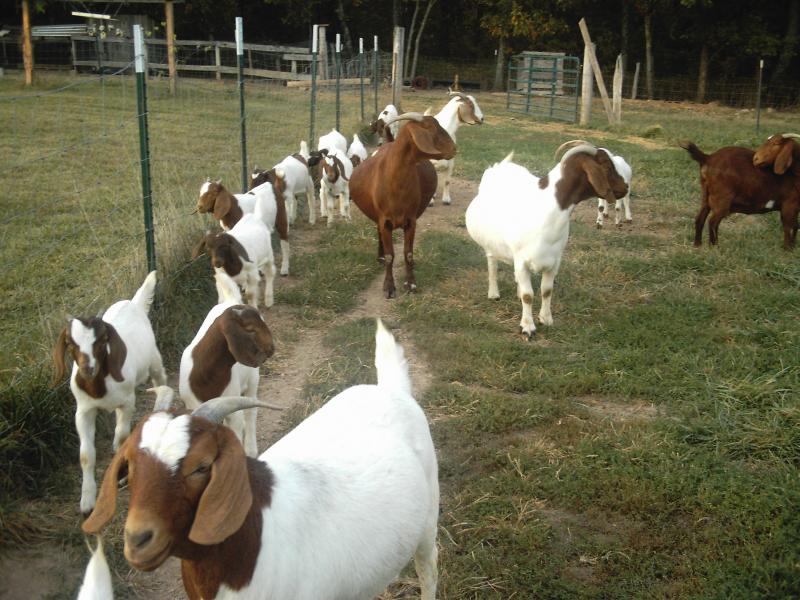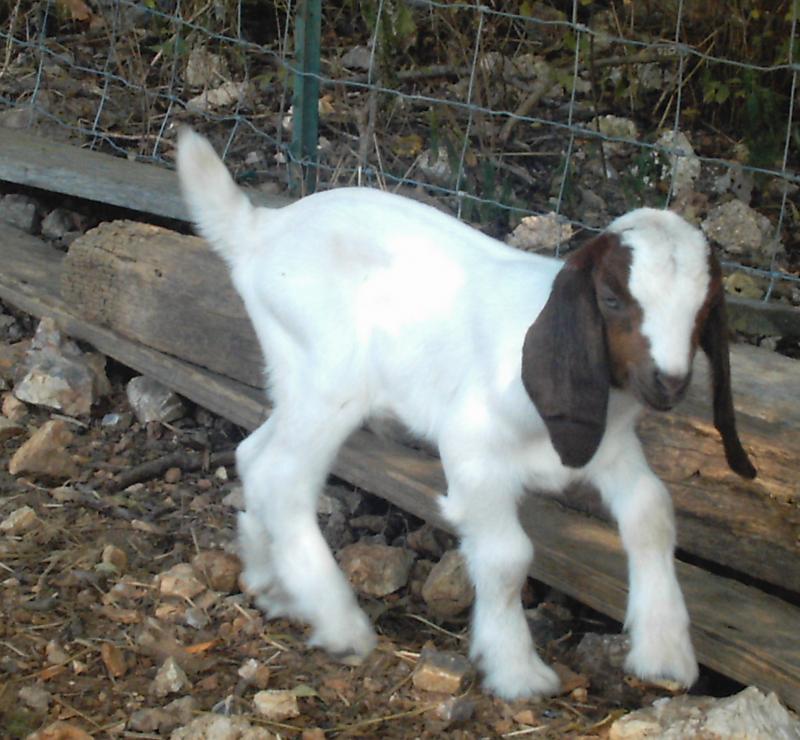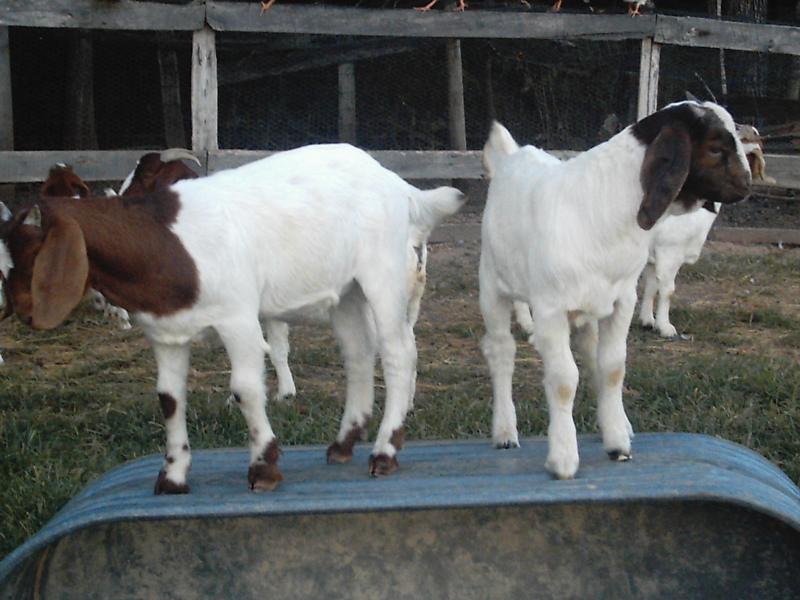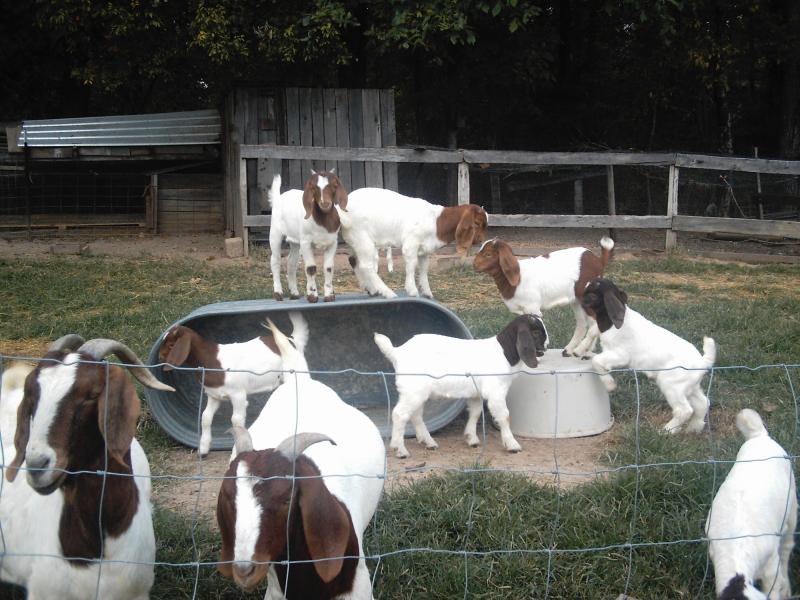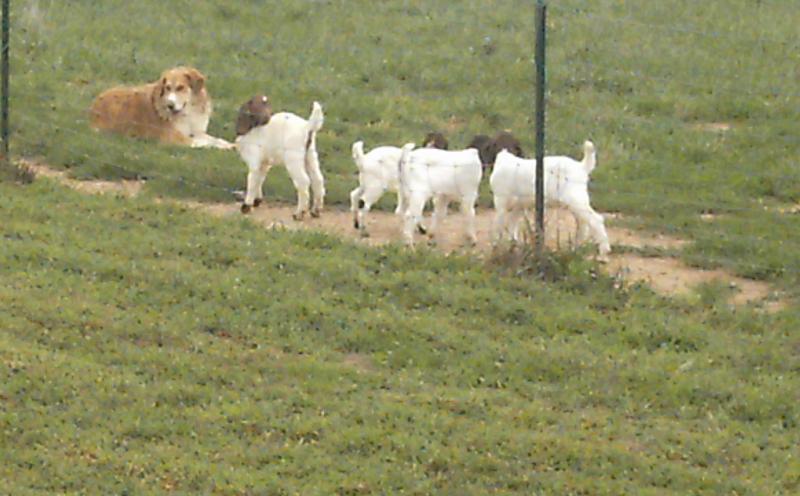WELCOME to the Official site of
Marty Rightmyer
Come visit our Ozark Mountain Home, Gilly Goat, PRF Farm. Yes, we live in a 100 year old Ozark Barn on the top of the Mountain. :)
2010 Kids
After freezing our buns off in the barn in the middle of winter delivering baby goats, we decided that it was time for a change. After considerations above and beyond we aimed for them to come into the world in warm weather. August was chosen, and we learned. Our timing was a month off so next year they will begin in September.
There are quite a few things that go into raising this type of goat. It took up a few years and a lot of downfalls to understand the makings of a good MEAT goat. It's no different then raising cattle for consumption unless you let your heart get in the way and find your favorites.
We decided that if we were going to get into Market Stuff then, we would raise the healthiest critter we could.
Goat meat is a good meat, but I personally don't eat it. I'm not much on beef either.
Instead of just posting pictures, I thought it would be a time to let you see the process of raising a good product.
I've learned so much about cattle and goats over the last few years and frankly, the way things are raised now a days is awful. The word organic comes to mind and what people think they are getting in the grocery stores is far from the truth.
Hopefully, in these pictures you can see exactly how our products are raised, how we treat them and where they go.
It's part of farming and it is also a part of my own heart with the herd that produces for our farm. We enjoy our kids but at the same time, we try to improve our herd in their natural genics.
We breed for certain confirmations such as:
A nice rounded shoulder at the back.
Tenderloin down the backbone is strong and rounded.
A nice hip and rump structure.
A deep and full chest.
In our males, a thick muscled but short neck.
In our females, kept or sold for breeding, we look for a longer neck, nice pelvis and a good muscle structure.
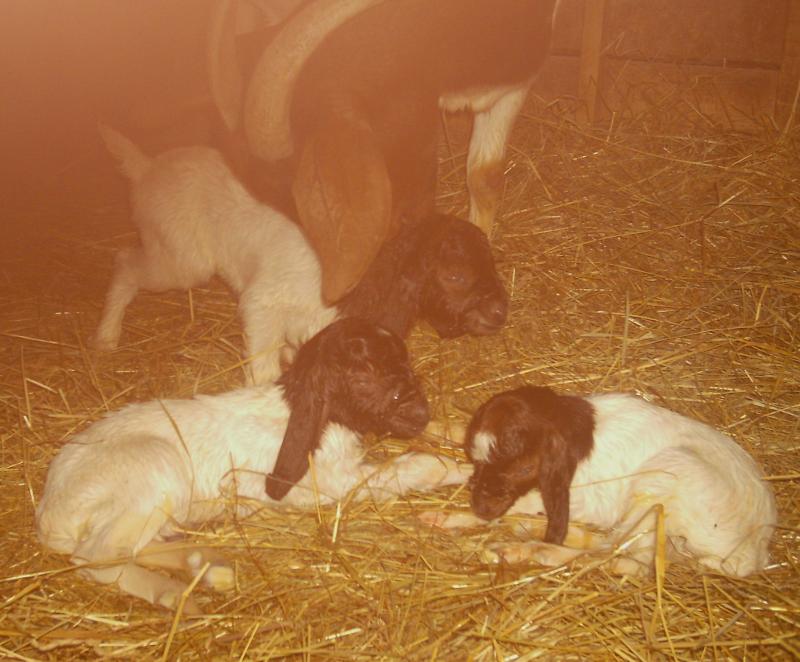 Our kidding season starts in a controlled area. The base flooring has to be kept clean, limed and I use a spray disinfectant to keep all germs away. Then a thick layer of hay goes down with more on the side to spread as each kid enters the world.
Our kidding season starts in a controlled area. The base flooring has to be kept clean, limed and I use a spray disinfectant to keep all germs away. Then a thick layer of hay goes down with more on the side to spread as each kid enters the world. There is quite a bit of fluid that can easily grow germs. The most common is one that creates a condition called "Floppy Kid Syndrome" where the nipples of the doe pick it up and on first nursing attempts, the baby is immediately infected. His nervous system is then compromised. An infected baby can not stand but flops around trying. It's sad, so being in a clean area for a domesticated baby is a must. 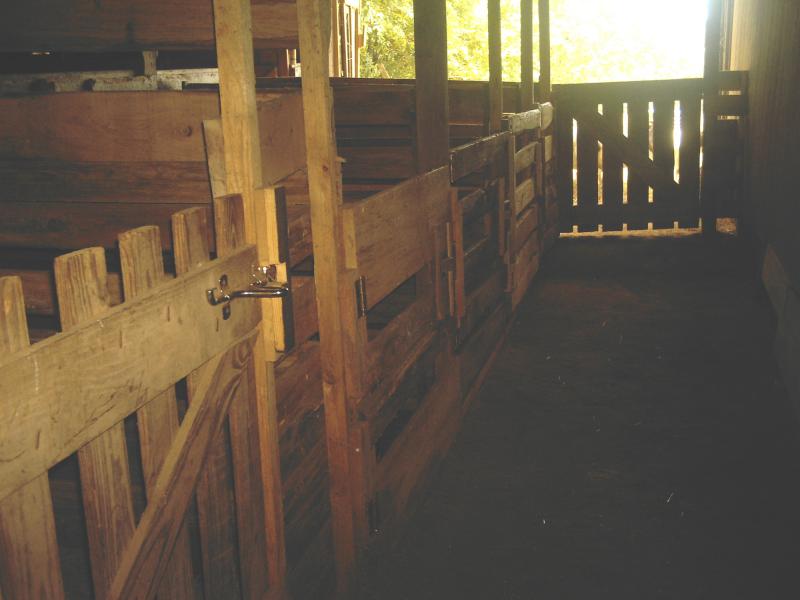

The birthing area is a large stall, but as each doe gives birth, they are put in a smaller stall and for the first three days they are rested, lie in a stall and then put in a small barnyard with their doe for a few hours.
Again, this is a dangerous time for the babies. They have got to get that first very important colostrum from their doe for the immune system to function properly. It is also during this time that we look for a black plug to release opening up the bowels on the little one and his first urination. Both are extremely important. Quite a few problems can be eliminated when we spot the body functions working properly. It is also the time of the doe's getting their babies under control. They coo to them, stick them in a corner to hide them, make them sleep then the doe will feel safe to go off and graze returning to nurse them and do the process all over again. 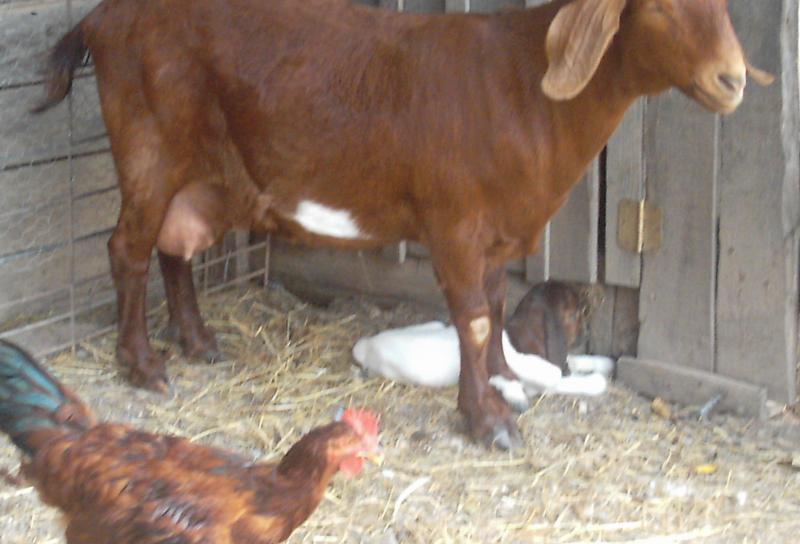

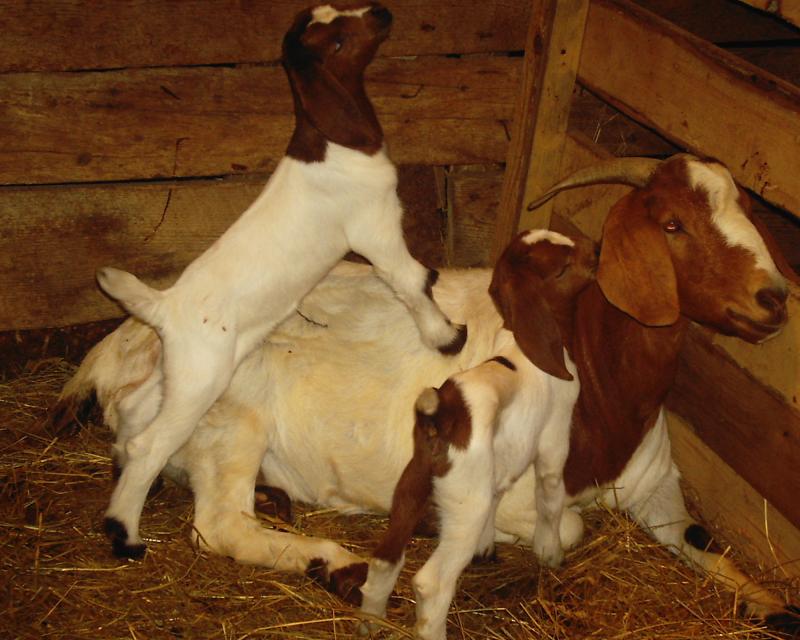
Bonding happens in their stalls. It is a time for the doe to rest, feed and talk to her kids. See, these moms let their kids walk all over them too.
Each doe is given her stall a few days before birthing so they know their area. They are separated because does will fight with another doe and I'm not taking any chances that a baby can be hurt before it is born. They like their area and get really fussy if another comes near it. This system also lets me watch the doe for signs of labor and believe me, they let me know. 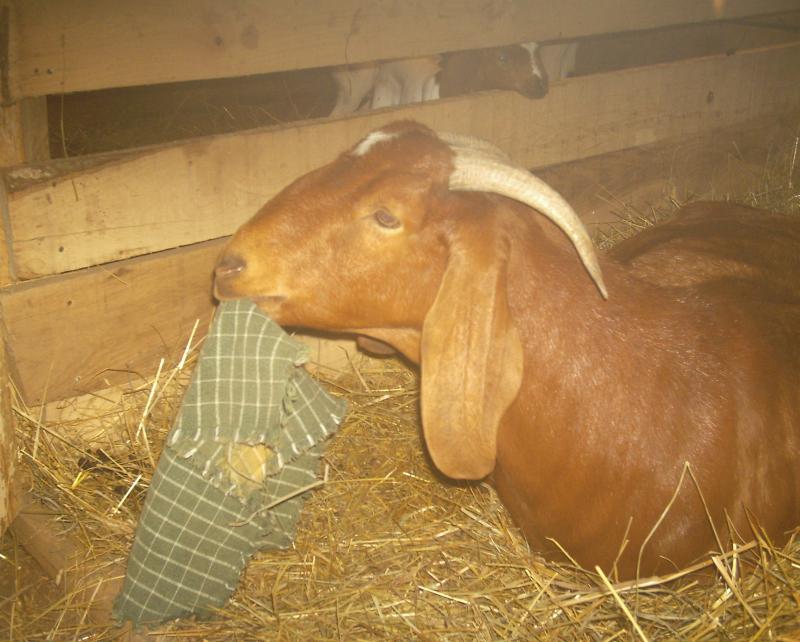

Cinnabette decided to flag me down during her first stages of labor!
Blackberry concentrated and with this stress, I knew to stay close.
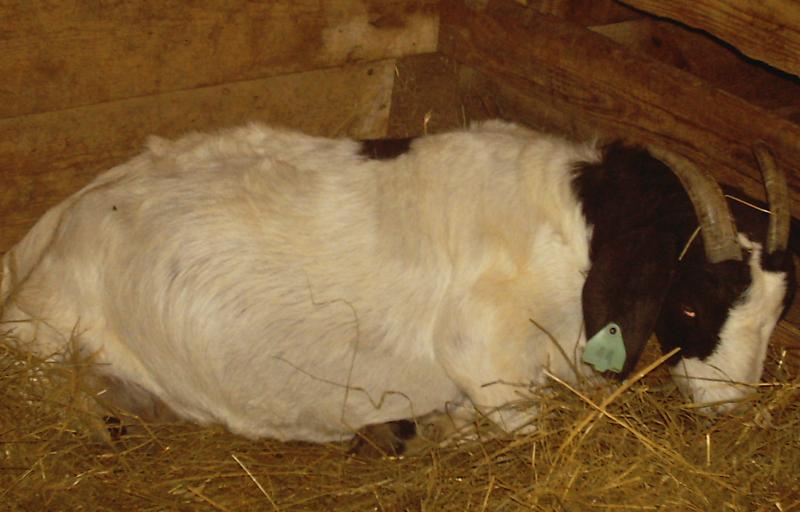
After the babies are born, the first one tries to get up and nurse. This is the trigger for the next baby to be born. By nudging on the doe's bag, endorphins are released to put her in labor again. This is a comical time. These newborns remind me of flopping fish, hectically trying to get to the food source. At this point the doe is busy trying to clean her newborn and clean up any and all signs of birthing but the first time they stand is just to funny. Once they get up they don't really know what to do next.
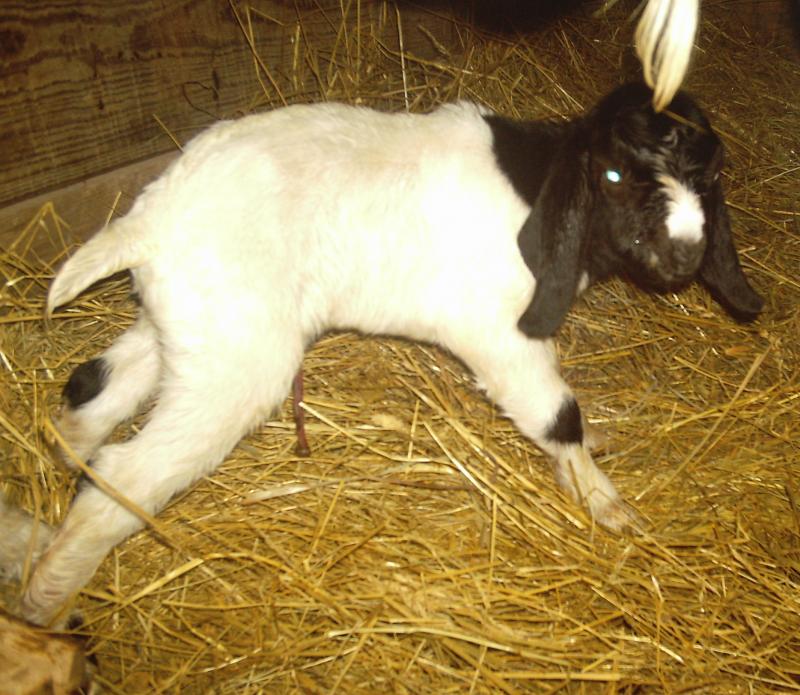
Soon the stalls get filled with doe's and babies then the mass exodus to the outdoor comes. It's a free for all. Each mother is so protective that she doesn't want another doe near HER babies. They fight! Not small encounters either, these nice goats go at each other and actually forget they have babies close by, but soon they resolve and go stand by their offspring.
In a few days, this process gets old to them and the need to go out in the pasture to eat and produce milk, is just to much. Slowly, when they feel their babies are safe, they venture away from them and things change in the herd. Now we have mothers that are banding all of the babies in one spot instead of fighting and walk away leaving one mother to babysit the whole gaggle of goat fur! Heaven forbid if you are the last goat to leave the area, your stuck with all of them. To my complete amazement, that last goat will not leave the babies. She stays right in the middle of them until the herd returns. I've often wondered if this is what happens in the wild.
All of the does sound off when they return, calling in their own tone and the babies know it, they run to the sound and hope they find their right mother. If not, the doe will gently push them away and continue looking for her babies. Each is checked by smelling their tails, then if it is one of hers, they touch noses and the kid is pushed to the milk-bag. That touch is a signal. If the doe doesn't do it, the kid will not go near the bag. If all is ok they give a rather hard punch with the nose to the bag then start to suckle. As the kids grow, this process gets brutal. They attack their doe with such viciousness it makes me cringe. They literally butt the milk-bag like a punching bag and when the doe has had enough, she walks away until they calm down, then calls and they run at her again.
Goats only have teeth on the bottom jaw and when they are born they are as sharp as a razor blade but they don't bite their mothers and they don't hold on with those teeth to keep the mother from moving off.
Here during the babysitting, the kids make up the band. They learn from each other and start climbing on everything. I often laugh at the "Monkey See, Monkey Do" attitude.
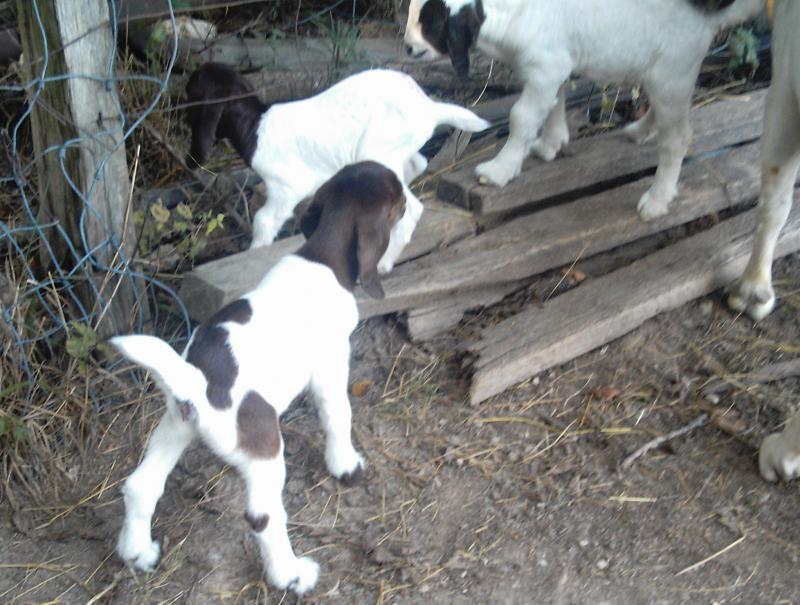
As each little one learn from his doe, he performs and the rest follow and as each shows off his skills, a new king of the hill arrives until he is outdone. They out do each other with a boldness that amazes me.
Most is learned in the barnyard and each skill is taught by the babysitter of the day.
In just a few days all of the babies have learned to stay put in the yard and venture out to find something to do. Most of it is look for their doe. Eventually they start to nibble and in this picture start to get interested in a new item in the field. Once again, it's the top boys that discover this new thing and check it out and then start to play with it. They play hard and long, they all of a sudden, the mess of them are down and sleeping.
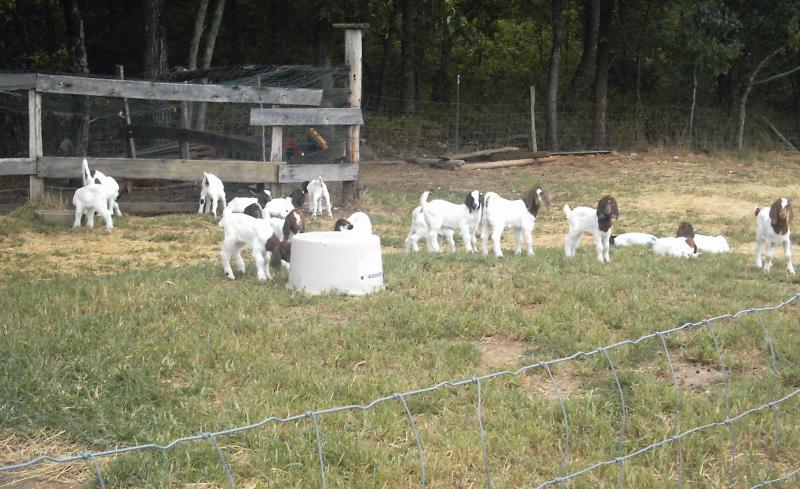
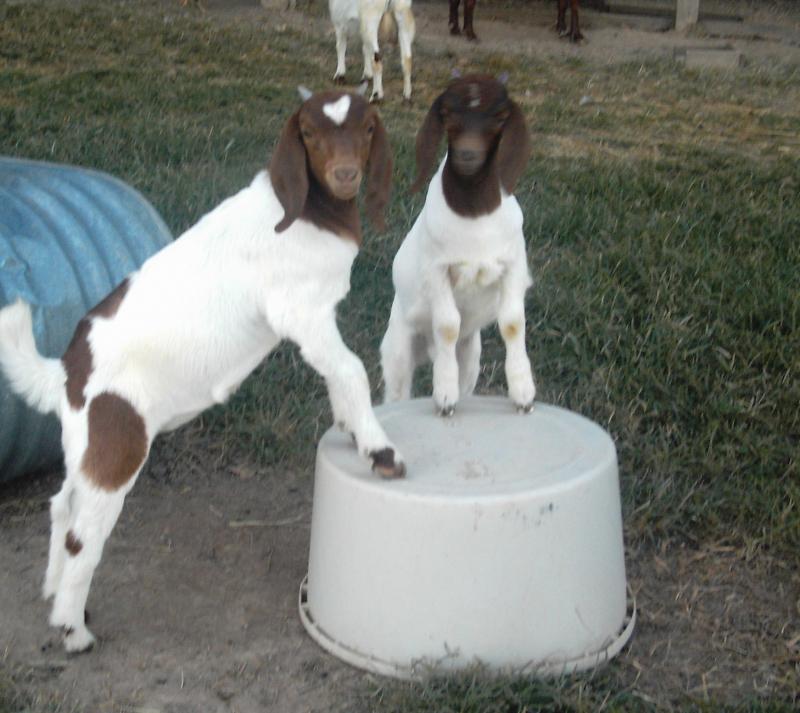
Trying out new things lasts about two weeks but as with all kids, they get bored and stick to the doe like glue. With a lot of courage, some of the babies refuse to stay in the barnyard as the does go out to graze and they follow them but not far. Each day, steps go further and further until one day, they venture out into the pasture.
It's during this time that mass confusion starts all over again as the does try to keep their kid by their side but...all the kids know is play and if they are not careful, they get left behind but the baby sitter is usually there be it the dog, cat, another doe or Pete.
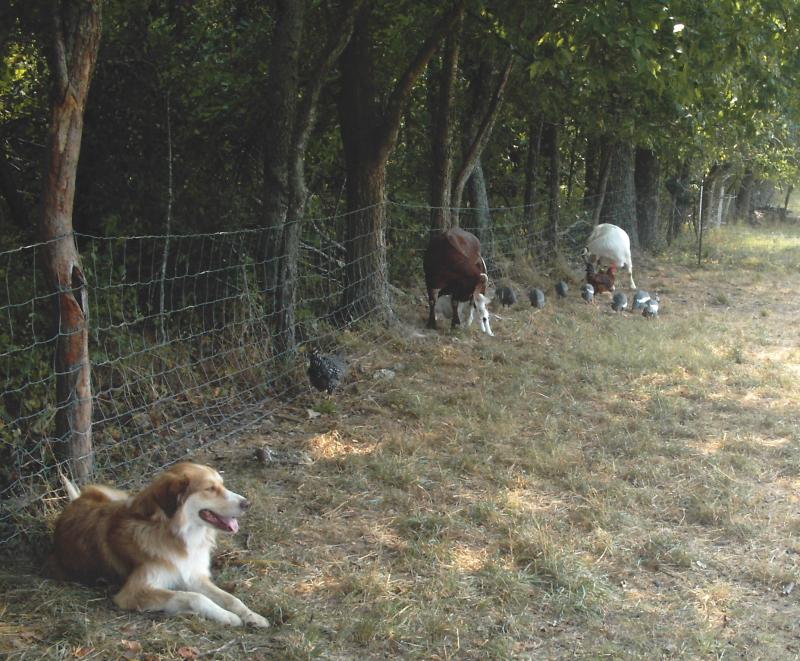
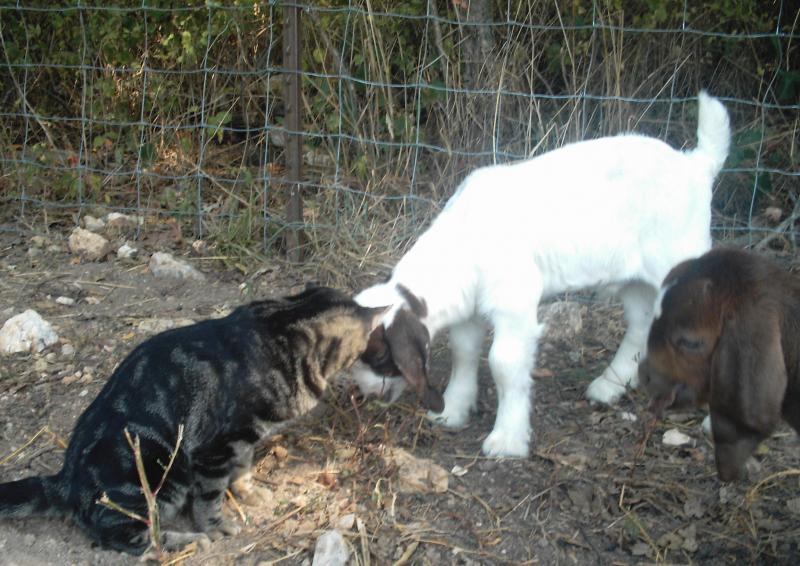
At three weeks old, most of the kids are romping, trying out new things to get into and venturing learning what grasses they can and can't eat. They are offered their own food in a feeding lot the mothers can not get into and gobble up and they grow. Once again they learn by repetition.
Here on the farm we worm out goats at three weeks old. The mothers were wormed 3 days after their kids were born and that also benefits the babies. Learning how to tell if an infant or mother is infested with worms is an art-form in itself but it is easy to determine if the immune system is compromised by the color of the inner eye lid and mouth. They are to be a bright pinkish red. A badly infested goat will be gray and have a miserable coat, be listless and at the end of the pack.
These type of goats are herd animals and if one is not with the pack, something is wrong. In the case of birthing, the doe will leave the pack and head for a spot she has chosen to have her babies then hide them. For domestic goats being raised for market, we can't have that, so I have a controlled herd.
During kidding season it's hard. You're stuck in the barn, at least I am but once they are about four weeks old, freedom is back for me and the little buggers become Juvenile Delinquents. Watching begins and a lot of laughing, mostly me laughing as I send Pete out to unstuck a head from the fence, break up a fight or get one out of the water bucket!
Here at the farm, we keep the herd to 20 does. Each one will have up to four babies and that is plenty for us. We had a good kidding season and only two losses this year but not to parasites or predictors. They got stuck when they were born and couldn't be saved. Hey, I never said this was an easy job but we have a good time watching the babies grow and learn as we go along. Something has to be out in that pasture for us to watch all day.
ANTICS
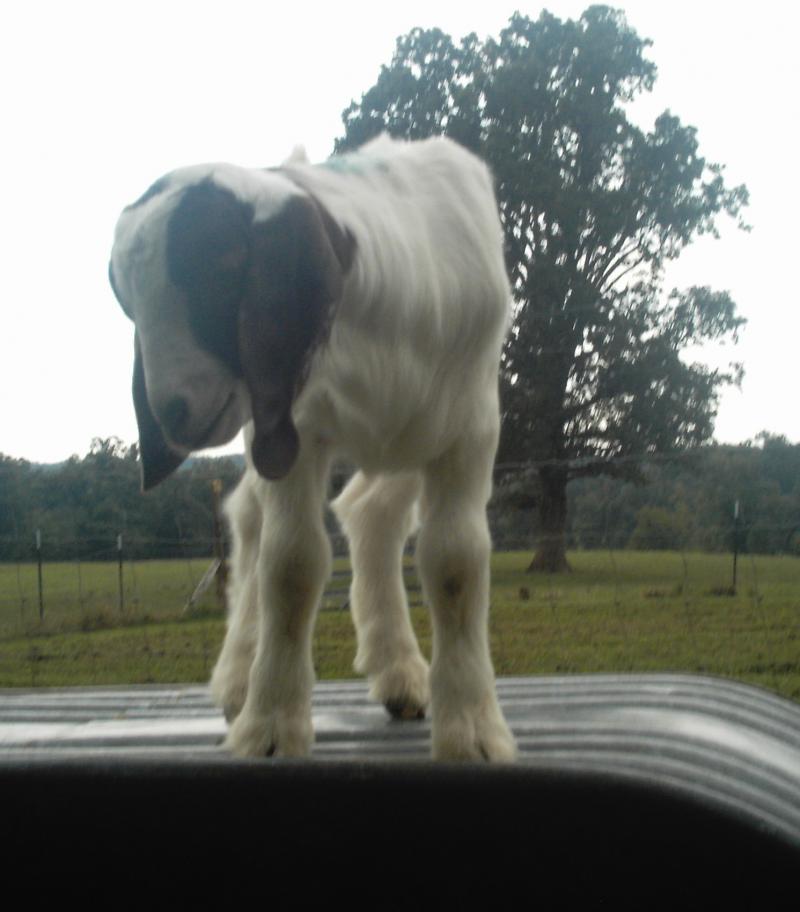
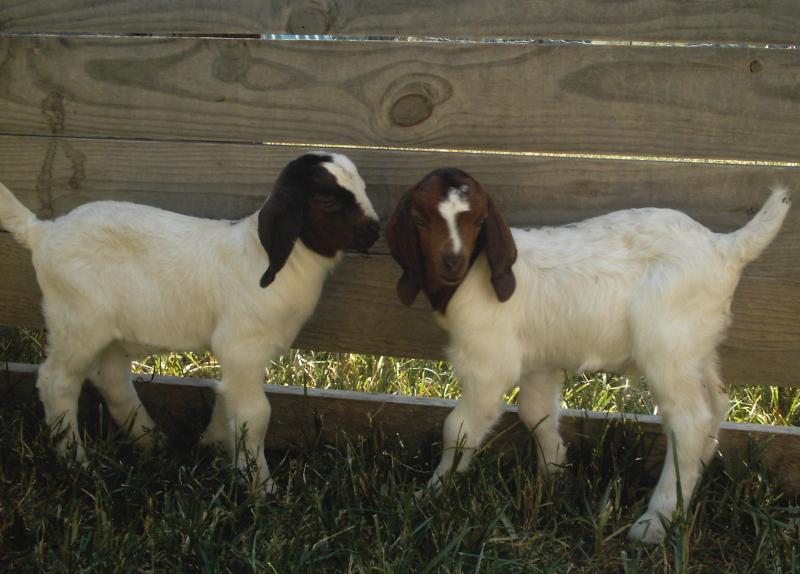
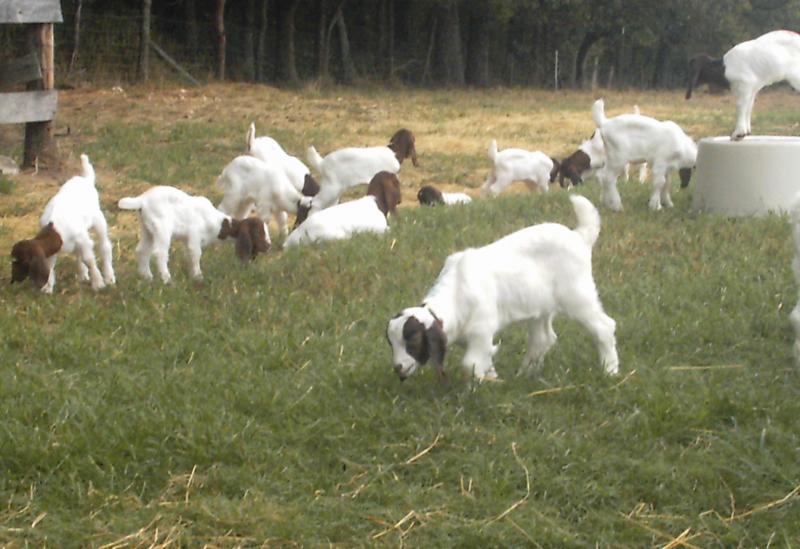
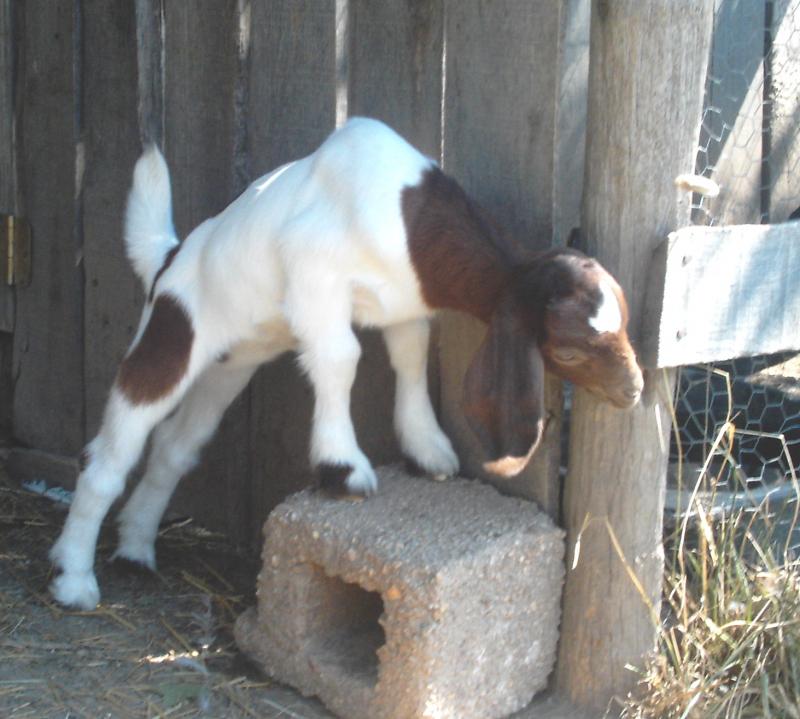
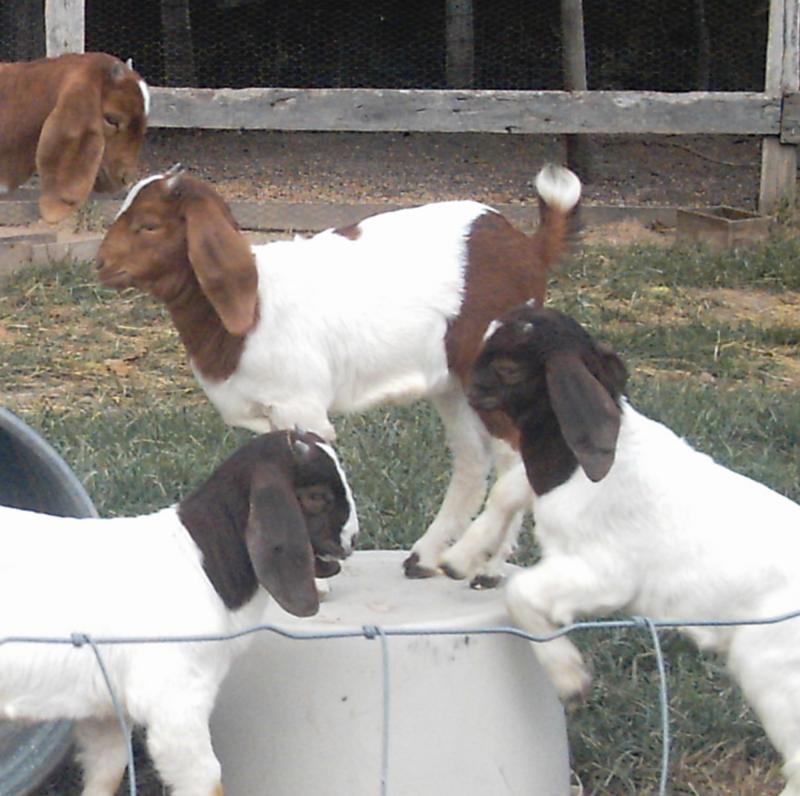
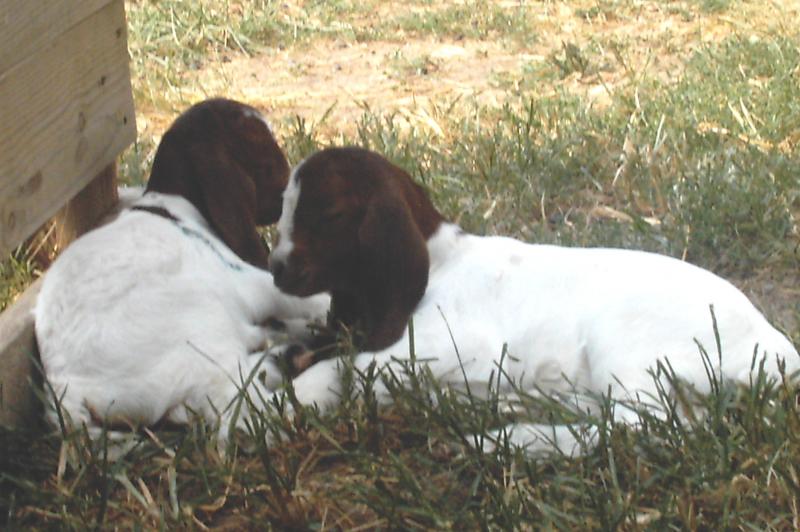
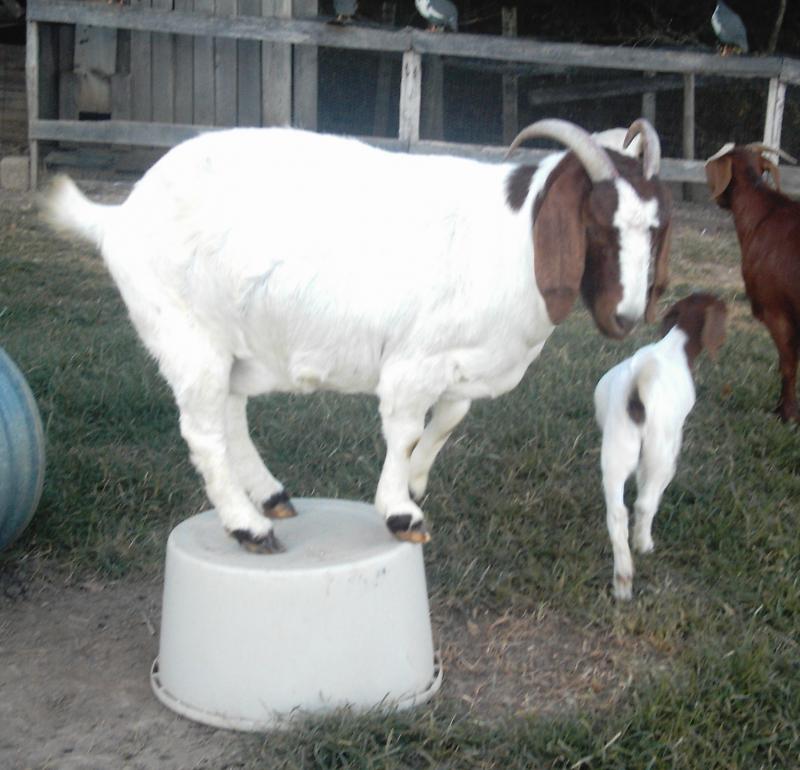
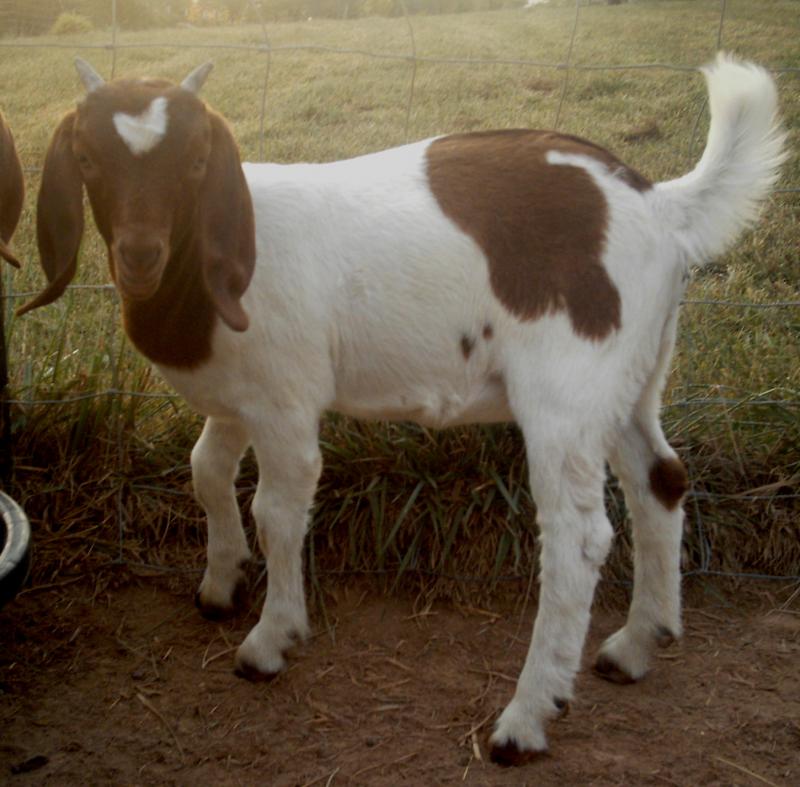
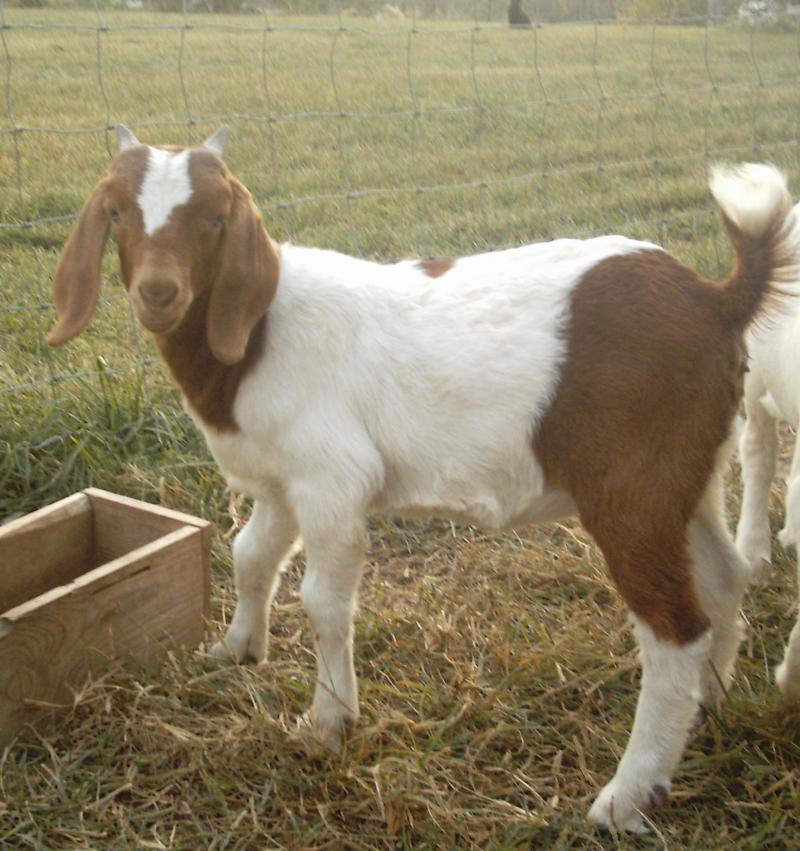
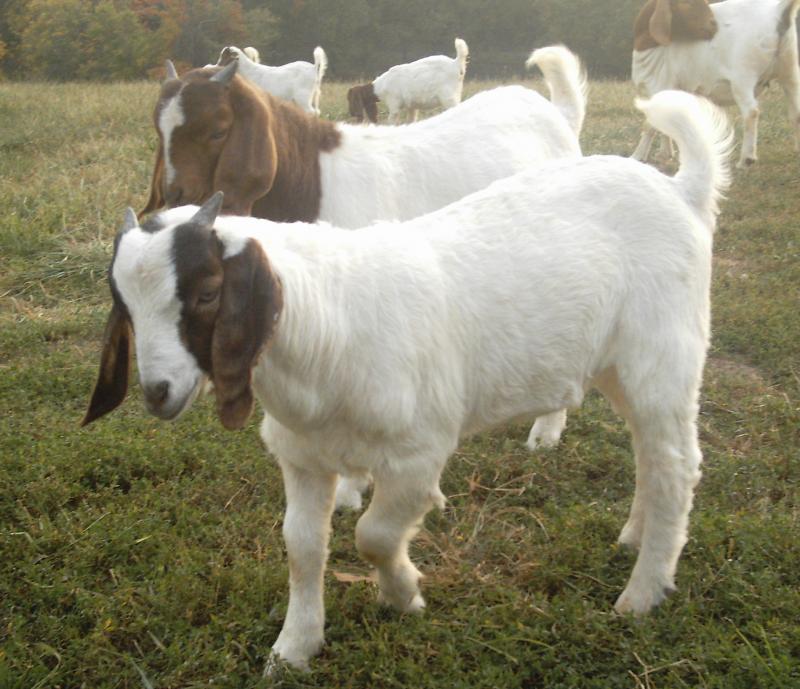
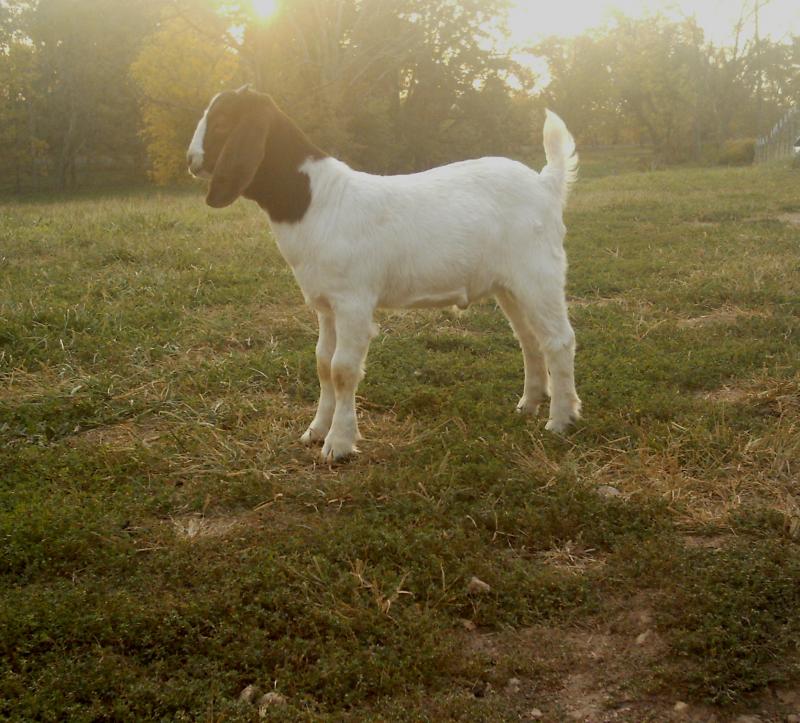
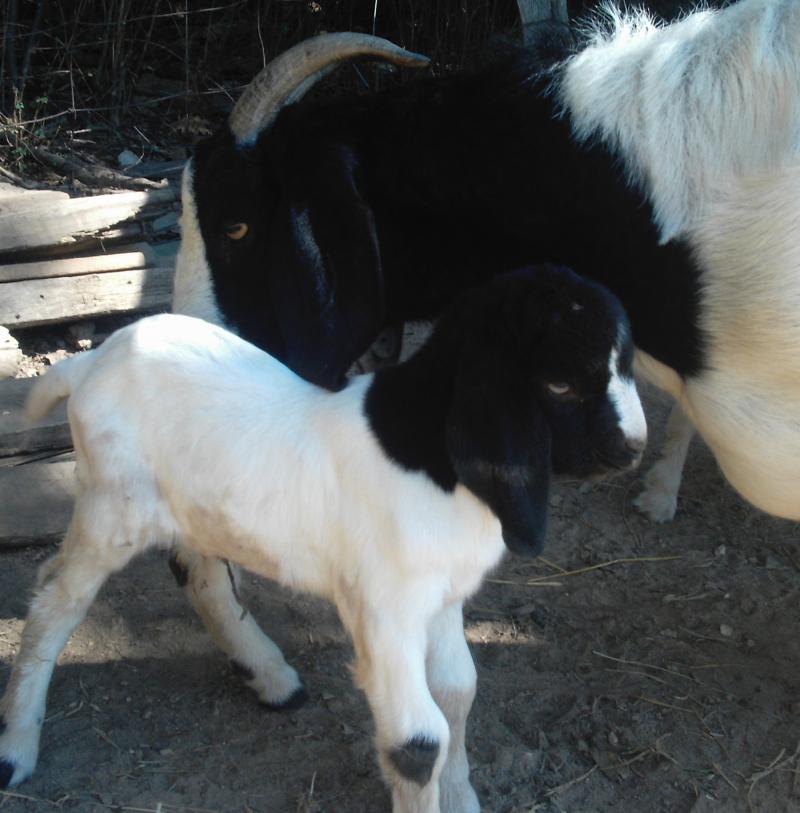
Come back often to see more pictures of the Baby Goats.
If you have any questions about or stock for breeding or market, please feel free to contact me through email.
These books are getting some great reviews. They are written for teens and young adults but it seems everyone is liking them. :) Winter months are cold here so I hope you enjoy what my immagination comes up with as I wait for spring. Enjoy. :) Come join me on twitter. MissMarty49 and Marty Rightmyer in facebook. I will always answer questions on the books, mountain and the critters in email. :)
